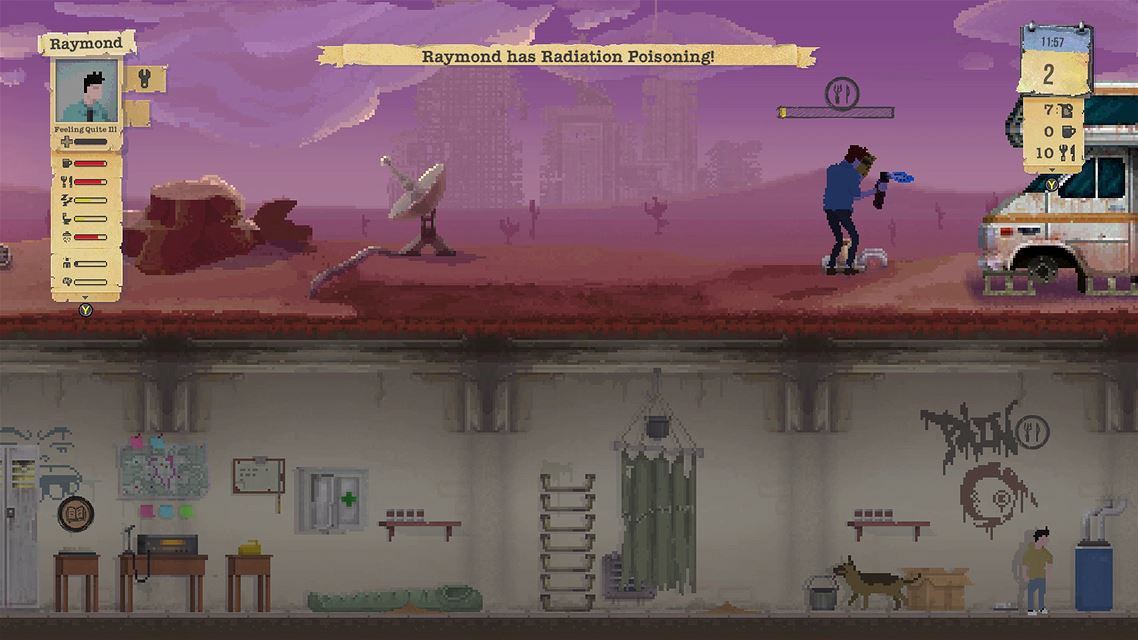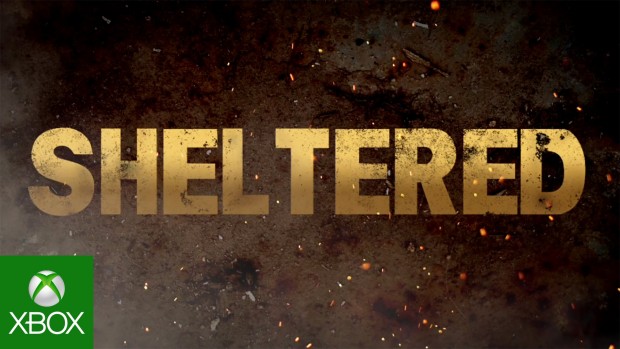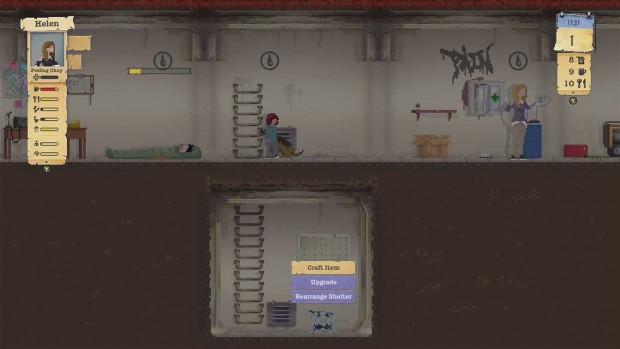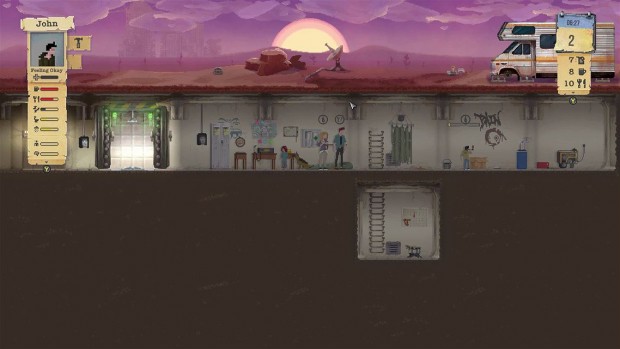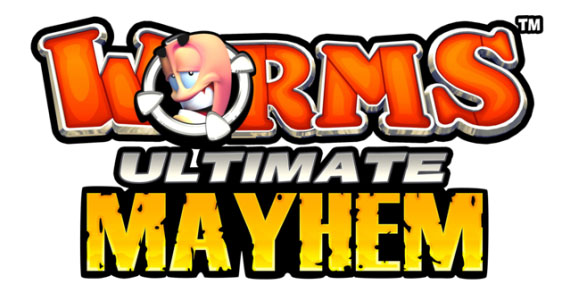During the first fifteen minutes or so of my initial playthrough of Sheltered, I couldn’t help but be reminded of the first time I played The Sims. Players create a family unit which comprises of two adults, two children and a pet, adjusting appearances and choosing from a range of pre-set attributes to create a balanced team – ideally. The parallels don’t end there however, because once the game begins, you’ll spend a fair bit of your time directing the family members to perform mundane tasks – drinking, eating, sleeping and maintaining things.
It wasn’t be long before Sheltered began to demonstrate its own unique take on the survival/household management genre however, because whilst you’re busy clicking your way through one manual task after another, someone will probably get sick, hungry, dehydrated or tired. Radiation sickness is the worst – caused only by venturing outside without either a hazmat suit (for surface visits in the immediate vicinity) or a gas mask (for when a party ventures into the wasteland.) Should they die at this early stage in the game, the aftermath will be catastrophic. Without the proper means to dispose of a body, the living relatives must “harvest” the dead, leaving with them a lasting impression in the form of trauma. As a side note, if you like creating a digital version of yourself in games like this, think twice before doing so in Sheltered.
Once you’re headed down the slippery path towards failure, small problems spiral rapidly out of control. The other family members quickly lose the will to live as the trauma mounts up, and the foraging is forgotten, the maintenance left undone as you try to deal with bigger issues. Starvation, thirst and pestilence become impossible to deal with, and if you don’t restart at this point, you’ll need a strong stomach to watch the family die out one by one.
Your next playthrough will be better though. You’ll think about the attribute mix of your family for a little bit longer, and you’ll quickly correct a few mistakes from your last run. For example, you’ll find the automate button, so that you no longer need to worry about all those extra food/water/sleep/hygiene clicks, and because John got radiation sickness and died last time, you now know that when a survivor leaves the shelter, he or she will need to be protected. You’ll also have learned about how to structure your progress in the early game – you’ll know what to craft (a sleeping bag, a bucket toilet and a basic shower) first and what components you need to build them, extend your shelter and rapidly address the mundane needs of your family.
Although it remains a game which needs to be micromanaged to some extent, the more mundane tasks in Sheltered do give way to more exciting ones as the shelter expands and begins to fill with upgraded stoves, water butts, bunk beds and the like. Exploration during the early stage of the game is mostly to facilitate survival – especially where food is concerned – but once the inhabitants of your shelter develop traps and a level of self sufficiency, your search parties will be more interested in finding those key crafting components which take the shelter to the next level.
Although it may seem relatively straightforward at first, Sheltered is a surprisingly deep game, with many layers of gameplay for those willing to persevere and seek them out. Considering it is part of the Microsoft preview program, it seems extremely stable and complete, and I can report that I didn’t experience a single crash or game breaking bug during my reasonable number of playthroughs.
Sheltered was developed for Xbox One by Unicube and published by Team 17 Digital. It is currently available as part of the Microsoft Preview Program, but has not yet been released as a finished product. There is no specific release date at this time. A copy was provided for preview purposes.

